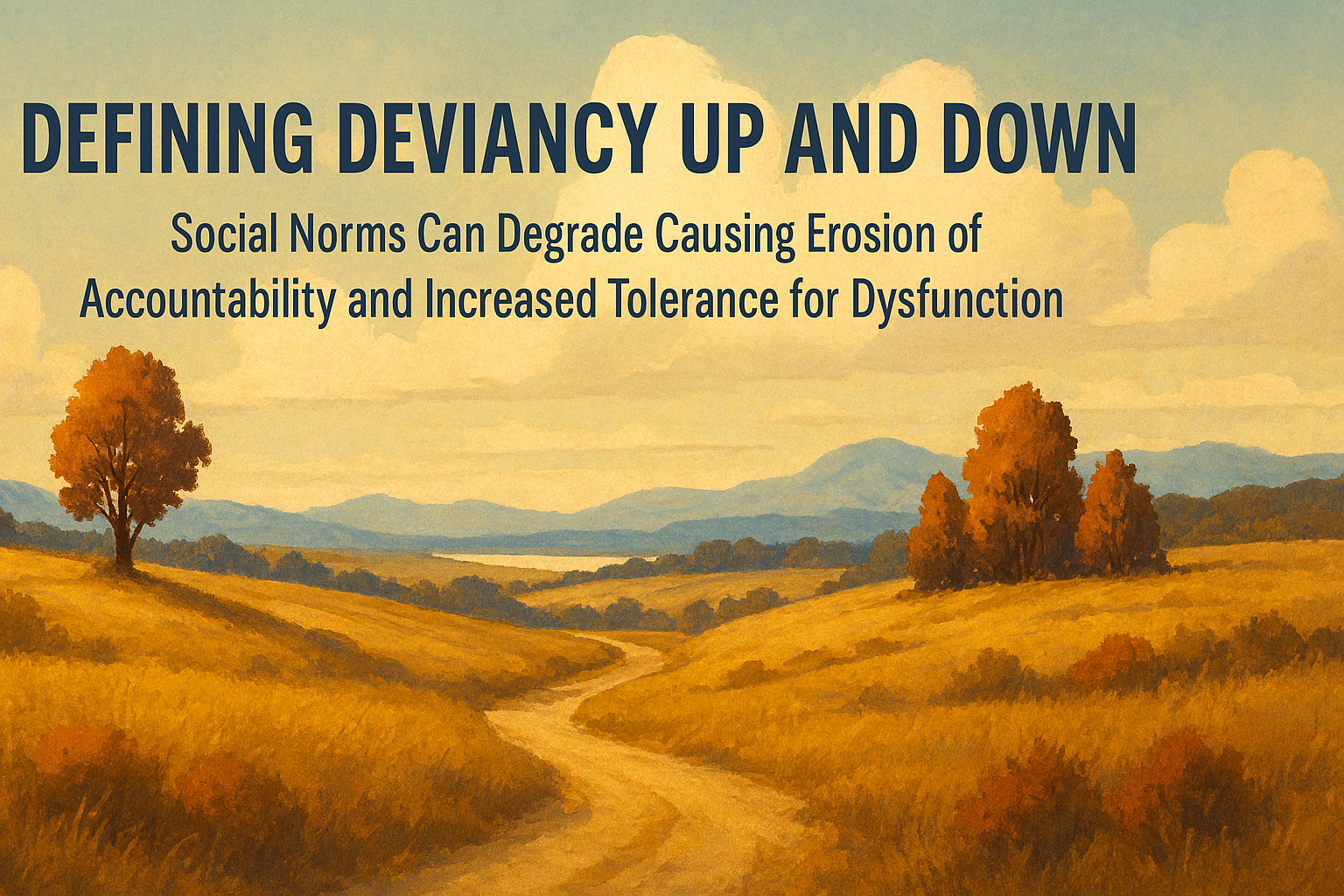Here’s what each term means:
Defining Deviancy Down
- Meaning: Lowering the threshold for what society considers deviant or unacceptable behavior.
- Why It Happens: Often occurs when certain behaviors become so widespread that enforcing traditional norms becomes impractical or politically unpopular.
- Examples:
- Crime: Normalizing petty theft or vandalism because it’s common.
- Family structure: Accepting absentee parenting or chronic truancy as “normal.”
- Implication: This trend suggests that society is becoming more tolerant of dysfunction, thereby reducing the stigma associated with behaviors once considered harmful. This should raise concerns about the potential erosion of social norms.
Defining Deviancy Up
- Meaning: Raising the threshold for what is considered deviant—labeling previously acceptable behaviors as problematic.
- Why It Happens: Often driven by cultural shifts, advocacy movements, or heightened sensitivity to harm.
- Examples:
- Workplace: Behaviors such as off-color jokes or informal comments are now considered harassment.
- Health: Smoking in public spaces, once regular, is now seen as deviant.
- Implication: Expands the scope of regulation and moral judgment, sometimes creating new social tensions.
Why It Matters
Both trends reflect changing social norms and policy responses:
- A downward shift can erode accountability and increase tolerance for dysfunction.
- An upward shift can improve protections but also risk overregulation or cultural rigidity.
Robert Bork also made significant contributions to American Law, legal theory, and public policy, shaping debates on constitutional interpretation and antitrust economics.
Slouching Towards Gomorrah: A Profound book that discusses defining Deviancy down
Theme: Cultural and moral decline driven by modern liberalism.
Robert Bork argues that American society is in a state of cultural decay, primarily due to two forces embedded in modern liberalism:
- Radical Egalitarianism – pursuit of equality of outcomes, eroding merit and responsibility.
- Radical Individualism – rejection of limits on personal gratification, undermining social order.
These forces, amplified by the 1960s counterculture and judicial activism, have weakened traditional values and institutions.
Key Arguments
· Cultural Breakdown
o Permissiveness in sexuality, entertainment, and lifestyle choices accelerates moral decline.
o Family disintegration and loss of shared norms threaten societal cohesion.
· Judicial Activism
o Courts impose liberal values through expansive interpretations of rights, bypassing democratic processes.
o Bork proposes a constitutional amendment allowing Congress to override federal court rulings by majority vote.
· Social Issues as Symptoms
o Abortion, euthanasia, affirmative action, and pornography reflect deeper cultural rot.
o The rise of identity politics and victimhood culture fosters division and resentment.
· Role of Religion and Tradition
o Moral and religious frameworks are essential for stability; their erosion leaves a vacuum filled by hedonism and relativism.
Consequences
- Declining civic virtue and weakening of democratic institutions.
- Expansion of state power to enforce egalitarian ideals, paradoxically reducing liberty.
- Cultural fragmentation leads to societal instability.
Proposed Remedies
- Reinforce traditional moral norms and religious values.
- Limit judicial overreach through constitutional reform.
- Encourage cultural renewal, emphasizing responsibility and restraint.
Implications for Today
Bork’s warnings resonate amid debates on identity politics, cancel culture, and judicial influence. His critique invites reflection on balancing freedom with moral order in a pluralistic
